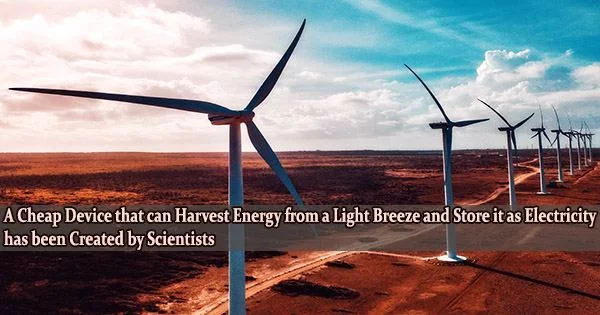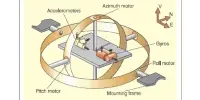Researchers from Nanyang Technological University in Singapore (NTU Singapore) have created a low-cost tool that can capture electricity from wind energy as moderate as a light breeze.
The device can produce a voltage of three volts and electricity power of up to 290 microwatts when exposed to winds with speeds as low as two meters per second (m/s). This is enough to power a commercial sensor device and allow it to transfer data to a mobile phone or computer.
The portable, sturdy appliance, known as a wind harvester, also directs any unused electricity to a battery so that it may be stored and used to power gadgets when there is no wind.
The researchers claim that their creation has the potential to take the place of batteries in the powering of sensors for structural health monitoring and light emitting diode (LED) lights. These are used to monitor the structural health of metropolitan constructions like skyscrapers and bridges, warning engineers of problems like instabilities or physical damage.
Measuring only 15 centimetres by 20 centimetres, the device can easily be mounted on the sides of buildings, and would be ideal for urban environments, such as Singaporean suburbs, where average wind speeds are less than 2.5 m/s, outside of thunderstorms.
The findings were published in the scientific peer-reviewed journal Mechanical Systems and Signal Processing in September.
Professor Yang Yaowen, a structural engineer from NTU’s School of Civil and Environmental Engineering (CEE), who led the project, said:
“As a renewable and clean energy source, wind power generation has attracted extensive research attention. Our research aims to tackle the lack of a small-scale energy harvester for more targeted functions, such as to power smaller sensors and electronic devices.”
“The device we developed also serves as a potential alternative to smaller lithium-ion batteries, as our wind harvester is self-sufficient and would only require occasional maintenance, and does not use heavy metals, which if not disposed of properly, could cause environmental problems.”
Wind energy is a source of renewable energy. It does not contaminate, it is inexhaustible and reduces the use of fossil fuels, which are the origin of greenhouse gasses that cause global warming. Our invention has been shown to effectively harness this sustainable source of energy to charge batteries and light LEDs, demonstrating its potential as an energy generator to power the next generation of electronics, which are smaller in size and require less power.
Professor Yang Yaowen
The innovation has received interest from the industry. The NTU research team is also working towards commercialising their invention.
The study demonstrates NTU’s dedication to reducing our impact on the environment, one of four grand challenges facing humanity that the University seeks to address through its NTU 2025 strategic plan. The innovation presented in the study could help reduce electronic waste and find alternative energy sources.
Riding the wind
The system was created to efficiently capture wind energy at a cheap cost and with little wear and tear. The main attachment that interacts with the wind is constructed of affordable materials like copper, aluminum foil, and polytetrafluoroethylene, also known as Teflon, and is attached to the body, which is made of fiber epoxy, a highly durable polymer.
The harvester vibrates when exposed to wind flow because of the dynamic design of its structure, forcing its plate to move toward and away from the stopper. As a result, charges develop on the film, and as they move from the copper film to the aluminum foil, an electrical current is created.
In laboratory tests, the NTU-developed harvester could power 40 LEDs consistently at a wind speed of 4 m/s. Additionally, it might activate a sensor device and provide enough power for it to wirelessly transmit data about the room’s temperature to a smartphone.
This showed that the harvester could not only consistently produce electricity to power a device but also store excess charge to maintain the gadget’s power for a lengthy period of time without wind.
Prof Yang added: “Wind energy is a source of renewable energy. It does not contaminate, it is inexhaustible and reduces the use of fossil fuels, which are the origin of greenhouse gasses that cause global warming. Our invention has been shown to effectively harness this sustainable source of energy to charge batteries and light LEDs, demonstrating its potential as an energy generator to power the next generation of electronics, which are smaller in size and require less power.”
The NTU team will carry out additional research to enhance the device’s energy storage capabilities as well as undertake material experiments to increase its output power. The study team is also submitting a patent application to NTUitive, the university’s innovation and entrepreneurship organization.
















